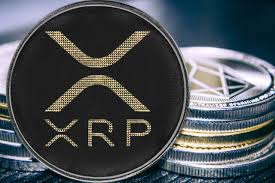MISSISSIPPI, MISSOURI LAWMAKERS INTRODUCE BILLS TO PROTECT THE RIGHTS TO MINE BITCOIN AND RUN A NODE
While the crypto landscape evolves, the bitcoin mining sector remains a vital cog in the cryptocurrency machine.

In the fast-paced digital realm of cryptocurrencies, mining has emerged as a fundamental process. While the crypto landscape evolves, the mining sector remains a vital cog in the cryptocurrency machine. In this comprehensive guide, we will delve into the world of cryptocurrency mining, covering everything from the mining machines and software to mining sites, calculators, apps, rigs, and the miners themselves.
Cryptocurrency Mining Machines: The Heart of the Operation
At the core of cryptocurrency mining are specialized machines designed to solve complex mathematical puzzles. These machines, commonly known as mining rigs or miners, are instrumental in securing blockchain networks and processing transactions. Here are some key aspects to consider:
- ASIC Miners (Application-Specific Integrated Circuit): ASIC miners are the most popular and efficient machines for mining cryptocurrencies. These devices are custom-built to perform a single task - mining. They excel in terms of power efficiency and speed, making them the go-to choice for professional miners.
- GPU Miners (Graphics Processing Unit): GPU miners, on the other hand, utilize graphics cards to mine cryptocurrencies. While they are versatile and can be used for other tasks like gaming, they are generally less efficient and consume more power than ASIC miners.
- CPU Miners (Central Processing Unit): CPU mining is the least efficient method and is mainly used for educational purposes or by those just starting out in cryptocurrency. These miners employ the computer's central processor to mine, which is significantly slower compared to ASIC or GPU miners.
- FPGA Miners (Field-Programmable Gate Array): These miners strike a balance between GPUs and ASICs. FPGAs are programmable devices, allowing for more flexibility than ASICs, but they are less efficient.
Crypto Mining Software: The Brains Behind the Operation
Mining hardware is essential, but it's the mining software that orchestrates the process. Mining software is responsible for managing the hardware, connecting to the blockchain network, and facilitating the actual mining. Here are some critical points to consider:
- Mining Pools: Cryptocurrency mining is highly competitive, and it's challenging for individual miners to compete against large mining farms. Mining pools are groups of miners who combine their computing power to increase their chances of solving a block and receiving rewards. Popular mining pool software includes CGMiner, BFGMiner, and NiceHash.
- Wallet Integration: Most mining software allows you to link your cryptocurrency wallet. This ensures that you receive the rewards and transactions directly into your wallet.
- Operating System Compatibility: It's important to choose mining software that is compatible with your operating system. Common options include Windows, Linux, and macOS.
- Remote Monitoring: Many modern mining software solutions offer remote monitoring and management, allowing you to keep an eye on your mining operations from anywhere.
Crypto Mining Sites: Where the Magic Happens
Crypto mining sites doesn't occur in a virtual void; it needs a physical location, power supply, and proper cooling to function effectively. Mining farms are dedicated facilities designed to house numerous mining rigs. Here are some key aspects of crypto mining sites:
- Location: The location of a mining site is crucial. Some miners choose to set up their operations in regions with low electricity costs to maximize profits.
- Power Supply: Mining rigs consume a significant amount of electricity. A stable and ample power supply is a must for a mining site.
- Cooling Systems: Mining machines generate heat. To prevent overheating and ensure the longevity of the hardware, mining sites need effective cooling systems.
- Security: Mining sites store valuable mining equipment. Proper security measures are necessary to protect the hardware from theft or vandalism.
Crypto Mining Calculators: Predicting Profitability
Before embarking on a cryptocurrency mining journey, it's essential to calculate the potential profitability. Crypto mining calculators are online tools that help you estimate your expected earnings based on various factors:
- Hashrate: Your mining machine's hashrate, or processing power, plays a significant role in determining your potential earnings.
- Electricity Costs: The cost of electricity in your location is a critical factor. High electricity costs can significantly eat into your profits.
- Mining Pool Fees: If you join a mining pool, there will be fees associated with the service.
- Hardware Costs: You need to factor in the initial cost of purchasing mining hardware.
- Market Volatility: The price of the cryptocurrency you're mining can fluctuate significantly, affecting your overall profitability.
Bitcoin Mining Apps: Mining on the Go
As the crypto mining apps world becomes more accessible, there is a growing demand for mobile mining apps. These apps allow users to mine cryptocurrencies directly from their mobile devices. However, it's essential to approach mobile mining with caution, as it comes with limitations.
- Electroneum (ETN): Electroneum is one of the pioneering mobile mining apps, offering users the ability to mine ETN directly on their smartphones.
- Pi Network: Pi Network has gained popularity for its mobile mining approach, allowing users to mine Pi coins without consuming excessive power.
- HoneyMiner: HoneyMiner is available for both desktop and mobile devices, and it automatically selects the most profitable cryptocurrencies to mine based on your device's processing power.
Cryptocoin Mining Rigs: Building Your Powerhouse
For those interested in more hands-on cryptocurrency mining, building a mining rig is a viable option. A mining rig is a custom-built computer system designed for mining cryptocurrencies efficiently. Here are the fundamental components:
- GPUs or ASICs: Depending on your budget and preferences, you can choose to use GPUs or ASICs as the core processing units.
- Motherboard: Ensure that the motherboard can accommodate multiple GPUs or ASICs, as this is where they will be connected.
- Power Supply Unit (PSU): A robust PSU is crucial to provide the necessary power to your mining rig.
- Cooling System: Given the constant operation of a mining rig, effective cooling is essential to prevent overheating.
- Rack or Frame: A mining rig frame or rack provides a stable structure for your components.
Cryptocurrency Mining: A Profitable Venture?
The profitability of cryptocurrency mining is highly dependent on various factors:
- Cryptocurrency Selection: The choice of miners for crypto to mine is crucial. Bitcoin, for example, is highly competitive and requires substantial resources. Other altcoins may offer more profitability.
- Electricity Costs: High electricity costs can significantly impact your profitability. Choosing a location with cheaper electricity can boost your earnings.
- Market Volatility: Cryptocurrency prices can be highly volatile. A sudden drop in the coin's value can affect your overall earnings.
- Mining Hardware: The type and quality of your mining hardware play a significant role in your success. Upgrading to more efficient machines can improve profitability.
Mobile mining apps are gaining popularity among cryptocurrency enthusiasts. These apps provide a convenient way to mine cryptocurrency without the need for specialized mining equipment or technical expertise.
What's Your Reaction?
















